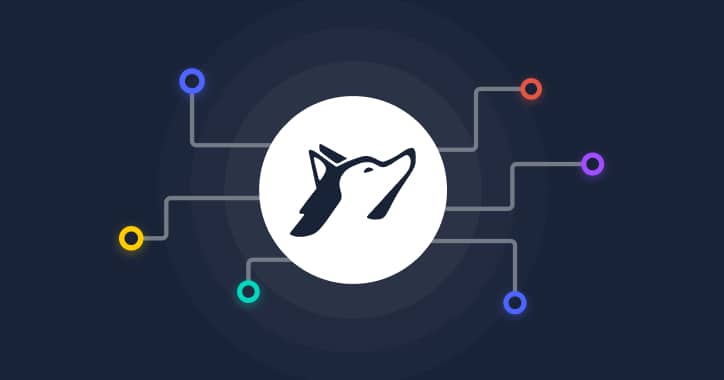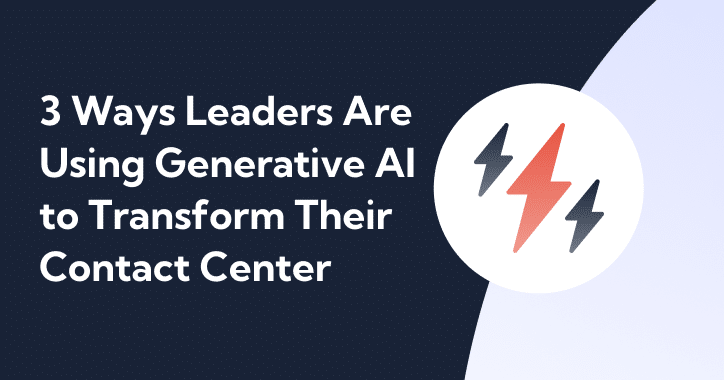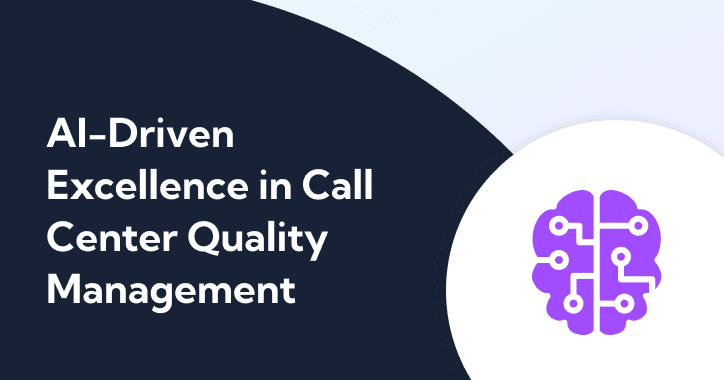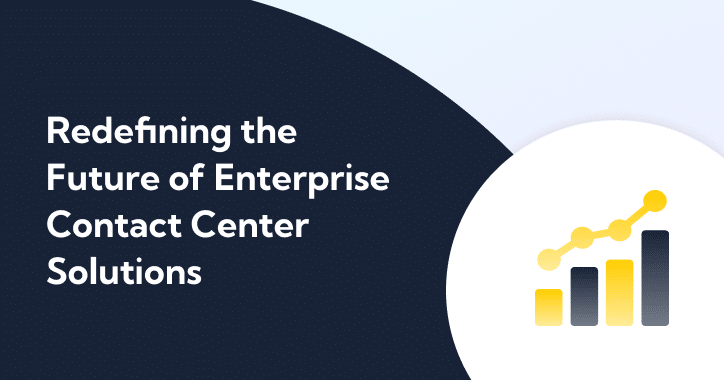This blog post is adapted in part from a webinar hosted by Balto featuring Michele Santagata. Watch the full recording here.
Every contact center has the capability to add value to their company through customer acquisition. By leveraging a clear mission, omnichannel solutions, and agent support, you can increase conversions and perpetuate steady growth.
Get Clear on the Goal and Mission of Your Contact Center
First, define what you’re trying to accomplish in your contact center. What is it? What are we trying to do here? What is our mission and goal?
Once you’ve defined that, it’s time for the hard part: Critique what you’re doing daily. Remove anything and everything that doesn’t directly support that goal and mission.
Often, admin work is dumped on contact centers simply because they’re a centralized team that can actually execute on a goal. That level of execution should not make up for a lack somewhere else in the organization.
– Michele Santagata
When we think about goals and missions, we want to be fierce with our commitment. If your contact center is focused on revenue-generating activities that match the mission of what you’re trying to do, we need a better plan than dumping extra tasks on agents. At the end of the day, that translates to sacrificing customer acquisition and potential revenue.
Examine the Customer Journey and Lead Funnel
Does your contact center take curious customers and transform them into viable leads for your funnel? Missing this opportunity could be hurting your ROI. If you can’t do anything with those customers, the lead closes and there’s nothing in the funnel.
Your call center needs to be converting as many inquiries to leads as possible (more on that later). Once all viable leads are in the funnel, think about and measure how they’re converting.
When I work with companies and they tell me, “My lead to close rates are fantastic,” I ask, “What about all the other things that happen in between those two steps or before those steps?” We want to measure every stage of the way in our funnels.
– Michele Santagata
Here’s an example: Your call center has trouble converting leads, so you do something to improve it. Now, more leads are going into the funnel. Close rates may go down because there are more leads, but you’re still getting more conversions. Now, all the new data you’re gathering can be fed to your marketing team to start the cycle over.
That’s the power of a centralized contact center. It’s the simple stuff you do every day that makes a difference in your organization.
Meet Customers Where They Are With Omni- and Multichannel Solutions
We want to be able to provide channels of communication that are convenient, ones that customers want to use. Often, businesses spend too much time thinking about what they expect the customer to do. The customer experience can be lost when you expect them to jump through hoops.
We need to remind ourselves to have the least amount of friction possible. Don’t create barriers where there are none.
When thinking about where you want to push into omnichannel solutions, consider testing out different use cases. Start by thinking about the channels you want to support, how your agents can support those channels, and the goal of each channel.
Every channel may not have the same purpose. If a customer is calling in, you may be trying to have them book an appointment. If you’re using chat, maybe that’s only a vehicle for capturing lead information. Even if all your channels have the same goals right now, experiment with different use cases and adapt your processes to see what kind of reporting and data you can get from customers.
Automate Where You Can, Personalize the Rest
Automating processes that don’t require agent input can save resources. But anything deeper than an automated message still needs that human touch.
For example, your company sends out a message asking a customer if they are still interested in your service. If the customer responds, that needs to be sent to an agent for a personal reply. The worst thing a customer can get in this scenario is a reply that says “Call us at this number.”
When we think about meeting the customer where they’re at, we must do just that. What are we asking of them and how can we make the communication clear and approachable? The worst thing you could do is send a response prompting them to use another device in order for their original request to be met.
Having an omnichannel CCAS platform is beneficial so your agents can communicate with people on whatever channel they’re comfortable with.
Don’t Make Customers Switch Channels Too Soon
Leveraging omnichannel platforms requires knowing when to move a customer seamlessly from one channel to another.
If a customer is on your website and opens a chat, they want to chat – not call a phone number. If they wanted to call, they would call. Forcing a customer to switch modes of communication too soon is a frustrating customer experience.
Supporting the Most Important People in Contact Centers: Agents
A growing number of contact centers are aligning their operations to ensure agents have proper support and management. Why? Because it helps drive sustainable growth.
Today, 90% of contact centers take over two months to train their agents to a proficient level. With a 30-45% industry turnover rate, that means those two months for every other agent is potentially wasted time and resources.
How do we make onboarding faster?
- Creating good processes that make it easy for agents. The less complex and more intuitive your agent processes, the easier you’ll be able to onboard.
- Ongoing training backed by continual coaching and feedback, not just leaving them to look for answers on their own.
- Allow agents to connect with callers. That’s what they’re hired for, good agent support should incorporate the real deal.
Tools For Agent Support
What are the tools you can use to support agents during onboarding and beyond?
- Scripting: Some contact centers don’t like scripting out of fear of sounding too stiff. If you’re doing it right, it shouldn’t sound like a call center. They shouldn’t be reading the script; they should be using it to their advantage.
- Knowledge Bases: Agents need to have the information for rebuttals and objections as they happen on calls. Can agents immediately access them, or are they navigating through clunky web pages while the caller is on hold?
- Automated QA: QA is absolutely necessary in a contact center. Automating your QA process with real-time tools is a huge time saver and gets agents essential feedback much faster.
Agent Rewards and Recognition
Traditionally, contact centers have a lot of people in a small space – even hundreds of agents on one floor. When things are going well and the culture is good, it spreads like wildfire. Conversely, when things aren’t going well, it’s just as infectious.
It’s important to consider what you can do to keep your agents motivated and create an environment where they feel supported.
Here’s how:
- Feedback: Agents need to know where they stand. Foster good relationships between agents and managers to ensure quality feedback is delivered effectively and proactively.
- Gamification: Don’t be afraid of tools that can spark fun and healthy competition. There’s plenty of them, but even simple contests can be effective. Try giving raffle tickets for each sale or appointment, and raffle off a gift card at the end of the day.
How Will You Challenge Your Team to Think Differently?
We’ve covered three broad areas to help contact centers increase customer acquisition. With these in mind, challenge yourself to think about what you’re already doing, what needs changing, and what can be added to maximize your growth.
This blog post is adapted in part from a webinar hosted by Balto featuring Michele Santagata. Watch the full recording here.






